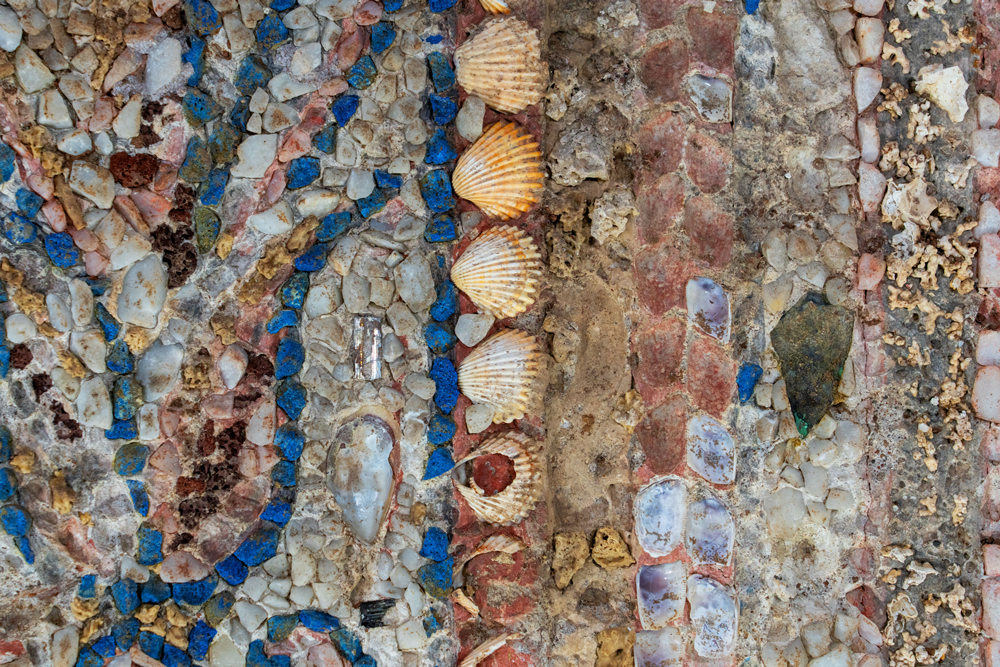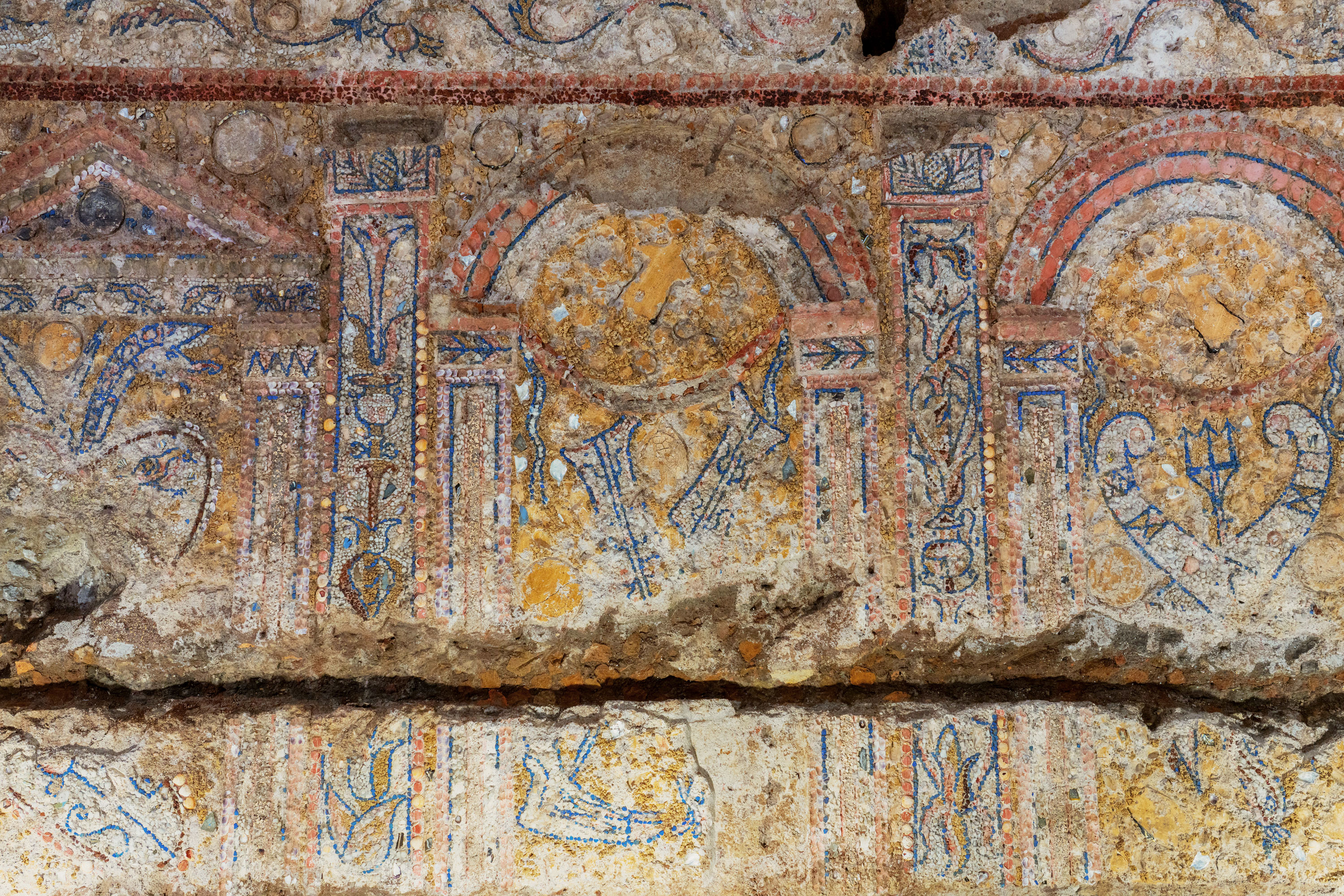Along the ancient streets where Roman bigwigs once strolled, archaeologists have uncovered a vast mosaic still beaming with colors as impressive as they were 2,000 years ago.
First uncovered in 2018 by archaeologists from the Colosseum archaeological park, the Italian Culture Ministry unveiled the discovery this week.
The mosaic was found in the remains of a luxurious townhouse, known as a domus, located between the Roman Forum and the slopes of the Palatine Hill in Rome, a short walk from the Colosseum.
It was once a luxurious home, featuring several stories, a garden, a grotto-like banquet room, and a water feature that worked using lead pipes embedded in the decorated walls.

A close-up of the mosaic, showing its stunning detail.
Image credit: Italian Culture Ministry
The centerpiece of the excavation is undoubtedly the mosaic found within the domus, which is dated to the last decades of the second century BCE. It was crafted using different types of seashells, Egyptian blue tiles, precious glass, flakes of white marble, and other types of stone.
These precious materials were used to depict a complex sequence of figurative scenes, including shoots of lotus and vine leaves emerging from vases, stacks of weapons, Celtic trumpets, and ships with tridents.
Perhaps, this hints that the owner of this house was a highly decorated general who led soldiers into battle on sea and land. Whoever they were, it’s a safe bet that they were rich and held a high social status in Roman society.

More of the motifs featured in the mosaic.
Image credit: Italian Culture Ministry
The structure was built in at least three phases between the second half of the second century BCE and the end of the first century BCE. This was a pivotal period that encompassed the last decades of the Roman Republic and the rule of Augustus, the founder of the Roman Empire.
Rome has been continually occupied for thousands of years, yet discoveries are continuously emerging as layers of the city’s rich past are unfolded. Although situated in the center of the Italian capital, it’s important to note that the ancient city is located some 7 meters (22 feet) below the streets walked upon by modern-day Romans and tourists.
Archaeologists are set to return to polish up the site in the new year, after which they hope to make the domus available to the eyes of the public.
“The archaeological excavation will conclude in the first months of 2024 and we will subsequently work intensely to make this place, among the most evocative of ancient Rome, accessible to the public as soon as possible,” Alfonsina Russo, Director of the Colosseum Archaeological Park, said in a statement.
Source Link: Stunning Roman Mosiac Found In Ancient Townhouse Near The Colosseum